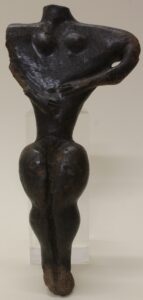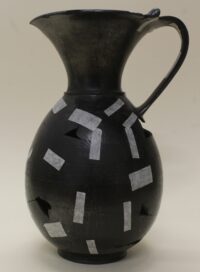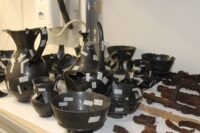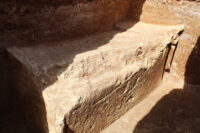 Last fall, an emergency rescue excavation in the Etruscan necropolis of Monterozzi near Tarquinia in central Italy brought to light 10 Etruscan tombs dating to between the Villanovan and the Archaic eras (8th-5th century B.C.). As is sadly endemic in Etruria, the tombs had already been looted in the past and suffered significant damage from tunneling and from agricultural activity. That was the emergency necessitating immediate intervention: shoring up the walls and vaults before they collapsed.
Last fall, an emergency rescue excavation in the Etruscan necropolis of Monterozzi near Tarquinia in central Italy brought to light 10 Etruscan tombs dating to between the Villanovan and the Archaic eras (8th-5th century B.C.). As is sadly endemic in Etruria, the tombs had already been looted in the past and suffered significant damage from tunneling and from agricultural activity. That was the emergency necessitating immediate intervention: shoring up the walls and vaults before they collapsed.
Of the ten tombs found in the excavation, one of them had the “good fortune” of only having been looted in antiquity. Back then all thieves cared about were precious metals. They generally left pottery and other unshiny grave goods behind. This tomb still contained dozens of ceramics and other funerary objects.
Daniele Federico Maras, an official of the Superintendence for the territory of Tarquinia, explains “The tomb dates back to the first half of the seventh century BC. It is of the ‘twin’ type, i.e. consisting of two independent chambers side by side, almost identical to each other and open to the south-west on as many open vestibules, which can be accessed via a steep staircase.
“The roof of both chambers is of the slit type, with an ogive vault carved into the rock, closed at the top by a series of nephrite slabs, while along the left wall is a bed, carved in stone which, in the case of the northernmost chamber, is decorated with carved legs”.
The doors of the tombs had been sealed with slabs of nephrite, which had unfortunately been broken by the grave robbers so that they could gain access to the tombs – however, in a very unusual twist, they had been carefully closed again after they had been plundered, Maras says.
Perhaps this was part of a belated show of respect for the dead – or hoping that there wouldn’t be divine retribution for the desecration.
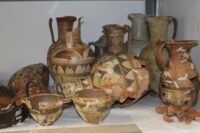 They were closing the tomb door after the corpse had fled, to coin a phrase. The two blocks of stone forming the roof of the north chamber were weakened by the looters’ entry into the tomb, and over time they collapsed.
They were closing the tomb door after the corpse had fled, to coin a phrase. The two blocks of stone forming the roof of the north chamber were weakened by the looters’ entry into the tomb, and over time they collapsed.
Dubbed the Gemina Tomb (gemina is Latin for twin), it is located in the very heart of the Monterozzi necropolis, just a few hundred feet from two well-known tombs from the 6th century B.C.: the Tomb of the Bulls (famed for the fresco of two bulls, one minding his business while a couple has explicit sex behind him, the other ready to gore the couple having sex in front of him) and the Tomb of the Augurs (famed for its four frescoed walls that include a figure originally thought to be an augur).
 Archaeologists had to sift through the rubble of the damaged tomb to recover the treasures the ancient looters deemed unworthy of theft. The excavation recovered a wealth of vessels painted in the Geometric Etruscan style, including an oinochoe decorated with a stylized fish on the shoulders by an artist known as the Painter of the Palms. There are also several engraved inky black painted Bucchero vases, Euboean cups of the chevron type, a clay figurine of a crying woman, fragments of wood and iron and of gold foil.
Archaeologists had to sift through the rubble of the damaged tomb to recover the treasures the ancient looters deemed unworthy of theft. The excavation recovered a wealth of vessels painted in the Geometric Etruscan style, including an oinochoe decorated with a stylized fish on the shoulders by an artist known as the Painter of the Palms. There are also several engraved inky black painted Bucchero vases, Euboean cups of the chevron type, a clay figurine of a crying woman, fragments of wood and iron and of gold foil.
All of the pots were broken, probably deliberately by the looters hoping to find something gold or silver inside. The fragments were left where they fell, thankfully, giving archaeologists 2,600 or so years later to collect all of the pieces and puzzle them together. The restoration process will be complex with so many fragments, but when it is complete, the Gemina Tomb artifacts will go on public display.
